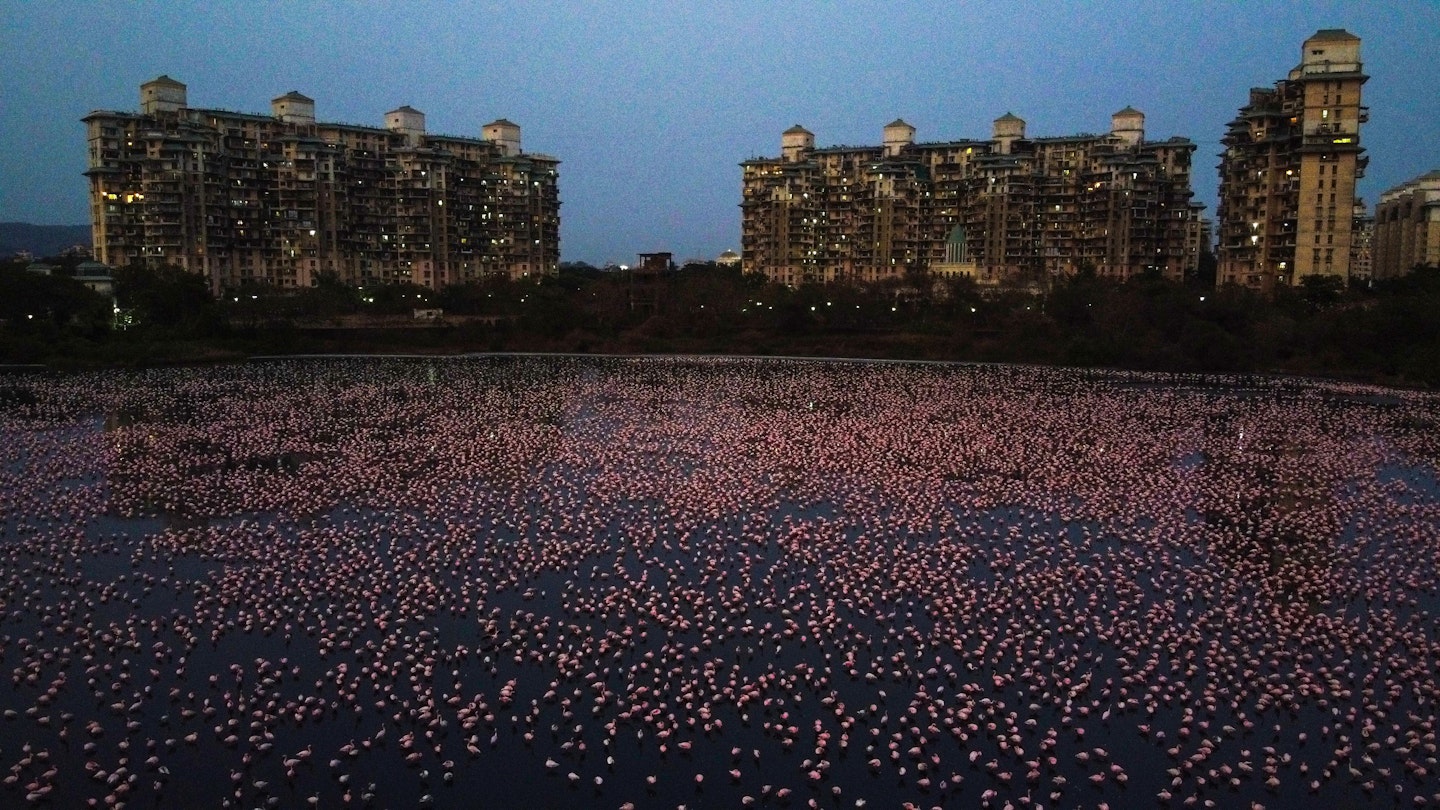Flamingos Take Over Mumbai During Lockdown
Hundreds of thousands of flamingos are painting India pink as they take over a creek in Navi Mumbai during the lockdown.
Since the 1980s, a large number of pink flamingos have migrated to Mumbai between the months of October and March for feeding. Visitors are made up of the greater flamingo (the taller and most widespread species) and the near-threatened lesser flamingo (shorter and more pink in color). This year, however, the population seems to have increased significantly. Residents have reported sightings of a higher number of flamingos hanging out on the mudflats of Thane Creek, with social media footage showcasing hundreds of thousands of birds bobbing on the murky waters in April and illuminating the lakes at night.

The Bombay Natural History Society (BNHS) estimates that 150,000 flamingos made the migratory journey to Mumbai this year, an increase of 25% compared to last year. While environmentalists do not have a definitive reason for the spike in numbers, they speculate that reduced human activity could have created more favorable conditions for foraging, particularly with the city under lockdown since March 25.
Speaking to the Hindustan Times, Deepak Apte, director of BNHS, explained that areas near Thane Creek and the Talawe wetlands usually experience considerable construction work, fishing activities, and movement of people. However, “the lockdown is giving these birds peace for roosting, no disturbance in their attempt to obtain food, and consequently encouraging habitat,” he noted.

Moreover, wetland destruction along Mumbai’s seaboard is pushing flamingos away from their preferred widespread locations and into smaller pockets like Navi Mumbai. The Uran wetlands, once home to a significant flock of flamingos, were recently reclaimed for the construction of an airport. Consequently, conservationists are increasingly worried that further development could displace the population.
Last year, authorities granted permission for India’s first bullet train to pass through Thane Creek’s protected flamingo sanctuary. Additionally, the construction of the 22km Mumbai Trans Harbour Link sea bridge has destroyed much of Navi Mumbai’s bird-friendly mangroves and mudflats, further threatening to drive flamingos away.

Every year, the birds arrive in Mumbai from Kutch in Gujarat and Sambhar Lake in Rajasthan, in northwest India. Smaller numbers are believed to fly in from Pakistan, Afghanistan, Iran, and Israel, and even as far away as France, according to BNHS. In May 2018, the wildlife research organization launched a ten-year wading bird study in Mumbai, aiming to assess the trends in abundance of birds in recent years and deepen understanding of India’s rich biodiversity.





